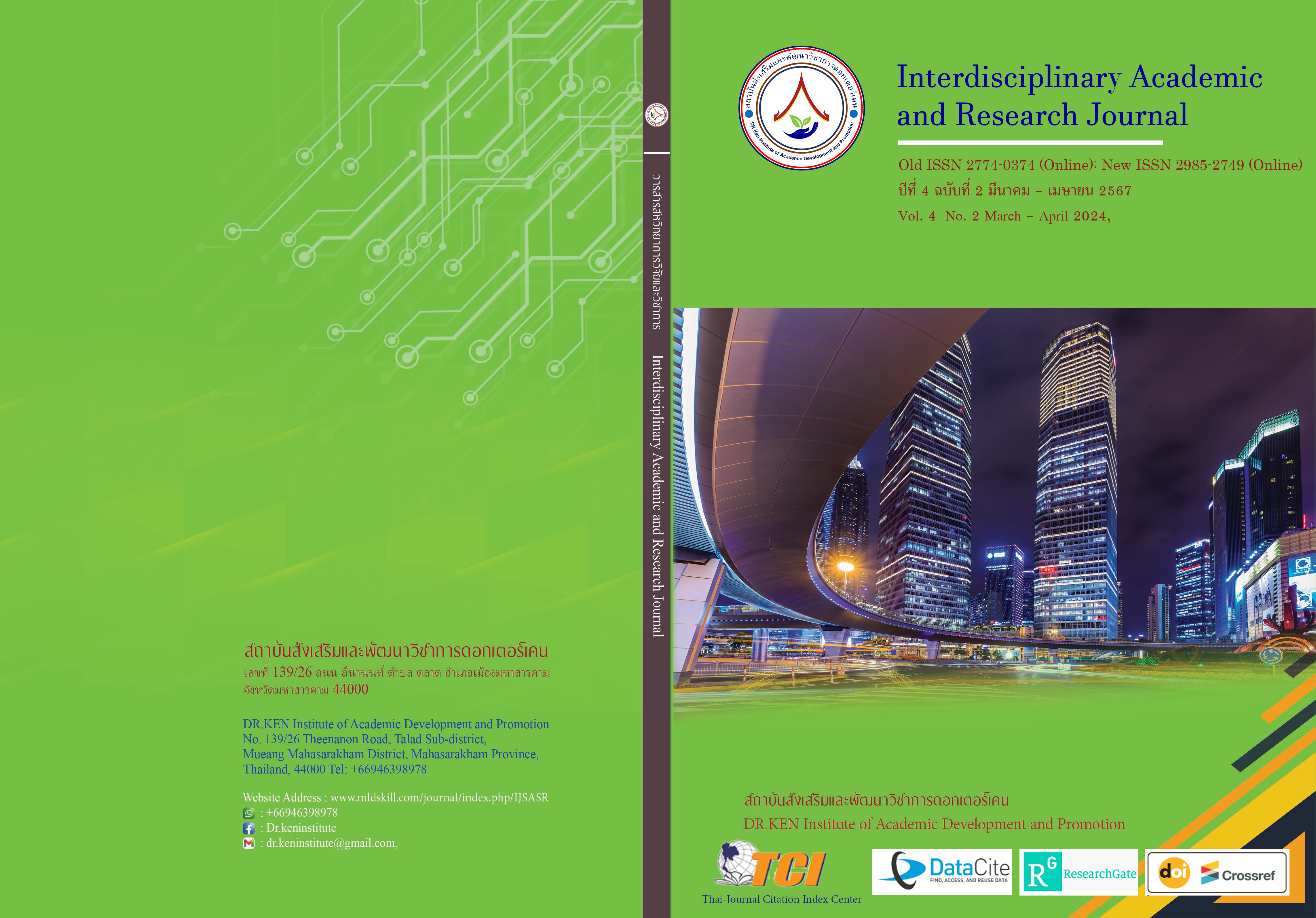The Study of Project on Community Development Participation t at Mueang District Nakhon Ratchasima Province
DOI:
https://doi.org/10.60027/iarj.2024.275658Keywords:
Student Participation; , Community Development;, Nakhon Ratchasima College of ScienceAbstract
Background and Aims: Nakhon Ratchasima Buddhist College is involved in the community development project in Mueang Nakhon Ratchasima District. A budget has been set aside for the academic service project of Nakhon Ratchasima College of Science, Mahamakut Buddhist University. The project will run from May 1, 2023, to October 31, 2023. The initiative in Mueang District, Nakhon Ratchasima Province, aims to foster community development. The initiative aims to serve as a hub for the pursuit of academic knowledge in Buddhism and to offer Buddhist academic services to the community at large. Thus, the study's objectives were to: 1) investigate how the public and students in Mueang district, Nakhon Ratchasima province, participate in community development; 2) conduct research at Nakhon Ratchasima Buddhist College for the academic year 2023. 2) Examine respondents' attitudes regarding students' and individuals' involvement in community development. 3) Describe the relationship between the variables affecting students' and individuals' involvement in community development.
Methodology: Sixty students from the Nakhon Ratchasima Buddhist College, which is situated in the Mueang area of the province, made up the sample for this quantitative study. The mean, standard deviation, and percentages were the study's instruments.
Results: (1) The level of student and public participation in Nakhon Ratchasima Buddhist College-sponsored community development projects was significantly high; (2) the level of student and public participation in community development projects has encouraged people in societies was significantly high at the.05 level; and (3) there was a positive statistical correlation, at the.01 level, between critical success factors and people's participation in community development.
Conclusion: The research on a community development project in the province of Nakhon Ratchasima's Mueang District. The research team discovered that the project's participants were deeply committed to advancing community development in the province of Nakhon Ratchasima's Mueang District. Teachers, staff members, and students who offered academic services and expressed satisfaction with the initiative comprised the study's sample. Regarding the individuals involved in the project, they reported greater creativity and public spirit, which made them pleased.
References
ธวัช พุ่มดารา.(2560). การมีส่วนร่วมในการพัฒนาชุมชนตามแนวทางปรัชญาเศรษฐกิจพอเพียงของเทศบาลคลองโยง อำเภอพุทธมณฑล จังหวัดนครปฐม. หลักสูตรรัฐประศาสนศาสตรมหาบัณฑิต. สาขาวิชานโยบายสาธารณะ,มหาวิทยาลัยนเรศวร.
พระธวัชชัย สนติธมโม วรรณนาวิน. (2561). การมีส่วนร่วมของประชาชนในการพัฒนาชุมชนในเขต เทศบาลเมืองสระแก้ว. ปริญญารัฐศาสตรมหาบัณฑิต, มหาวิทยาลัยมหาจุฬาลงกรณราชวิทยาลัย.
เมตต์ เมตต์การุณ์จิต. (2553). การบริหารจัดการศึกษาแบบมีส่วนร่วม: ประชาชน องค์กรปกครองส่วนท้องถิ่นและราชการ. พิมพ์ครั้งที่ 2. กรุงเทพฯ: บุ๊คพอยท์.
รัฐธรรมนูญแห่งราชอาณาจักรไทยพุทธศักราช พ.ศ.2560 (2560). Retrieved from: https://cdc.parliament.go.th/draftconstitution2/ewt_dl_link.php?nid=1038&filename=index
สัญญา เคณาภูมิ. (2551). ความสำเร็จของวิสาหกิจชุมชนใน4จังหวัดชายแดนลุ่มน้ำโขง. วิทยานิพนธ์รัฐประศาสนศาสตร์ดุษฎีบัณฑิต สาขาวิชารัฐประศาสนศาสตร์มหาวิทยาลัยราชภัฏวไลยลงกรณ์ ในพระบรมราชูปถัมภ์
อัครินทร์ อังกูรวงษ์วัฒนา. (2562). การมีส่วนร่วมของประชาชนการมีส่วนร่วมหมู่บ้านเศรษฐกิจพอเพียงของชุมชนบ้านบางเบา อำเภอพุนพิน จังหวัดสุราษฎร์ธานี. วารสารนิติศาสตร์และสังคมท้องถิ่น, 3(2), 55-58.
Berkley, G.E. (1975). The Craft of Public Administration. Boston: Allyn and Bacon.
Cohen, J.M., & Uphoff, N.T. (1981). Rural Development Participation: Concept and Measure for Project Design Implementation and Evaluation: Rural Development Committee Center for International Studies. New York: Cornell University Press.
Erwin, W. (1976). Participation Management: Concept Theory and Implementation. Atlanta G.: Georgia State University.
Huntington, S. & Nelson, S. (1975). No easy choice: political participation in developing countries. New York: Harvard University Press.
UN Bureau of Social Affairs. (1955). Social Progress Through Community Development. New York: The UN Publication.
Downloads
Published
How to Cite
Issue
Section
License
Copyright (c) 2024 Interdisciplinary Academic and Research Journal

This work is licensed under a Creative Commons Attribution-NonCommercial-NoDerivatives 4.0 International License.
Copyright on any article in the Interdisciplinary Academic and Research Journal is retained by the author(s) under the under the Creative Commons Attribution-NonCommercial-NoDerivatives 4.0 International License. Permission to use text, content, images, etc. of publication. Any user to read, download, copy, distribute, print, search, or link to the full texts of articles, crawl them for indexing, pass them as data to software, or use them for any other lawful purpose. But do not use it for commercial use or with the intent to benefit any business.
















.png)


